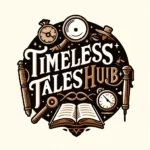Ah, A Study in Scarlet! If you’ve never heard of it, do you even read? Arthur Conan Doyle’s first foray into the enigmatic world of Sherlock Holmes is nothing short of a literary marvel, dripping with intrigue and spiced with enough wit to make Oscar Wilde blush. So, grab your deerstalker hat and magnifying glass, dear reader, because we’re diving into the delightful absurdity of Victorian detective fiction.
The story begins, as all great adventures do, in a hospital. Meet Dr. John Watson, an army doctor fresh from the grimy battlefields of Afghanistan. Picture him limping around London, looking for a place to live, and stumbling upon a peculiar advertisement: “Wanted: Companion for mysterious yet brilliant detective. Must not be allergic to violins or oddities.” Enter Sherlock Holmes, a man so eccentric that he makes your weird uncle who collects antique spoons seem positively mundane.
Holmes, our beloved detective, is a paradox wrapped in an enigma and dipped in a pot of strong English tea. He’s the kind of guy who spends his free time conducting chemical experiments and beating corpses with sticks just to see how they bruise. Fun at parties, right? But don’t let his quirks fool you—this man is a genius. He can deduce your life story from a single glance at your shoes and identify 140 different types of tobacco ash. (Why? Who knows? Victorian hobbies, am I right?)
Now, onto the meat of the matter: the case! A mysterious corpse turns up in an abandoned house on Brixton Road. There’s no apparent wound, just a twisted expression of agony and a cryptic word scrawled on the wall in blood: “RACHE.” Is it a clue? A red herring? Or just the deceased’s final attempt at a terrible game of Scrabble? Holmes, naturally, is on the case, dragging Watson along for the ride. Poor Watson, perpetually confused but ever-loyal, like a befuddled puppy trying to keep up with a greyhound.
Holmes’s investigation takes us on a whirlwind tour of Victorian London’s underbelly. Picture gaslit streets, shadowy figures, and a cast of characters so colorful they make a rainbow look dull. There’s a bumbling inspector (aren’t they all?), a terrified housekeeper, and a dog named Toby who deserves his own spin-off series. Every clue leads to another question, every answer unearths another mystery.
But wait, there’s more! Doyle, in his infinite wisdom, decides to whisk us away to the wild, wild American West. Yes, you read that right. In a flashback sequence that feels like it belongs in an entirely different book, we learn about a vengeful Mormon, a star-crossed romance, and a villain who could rival the mustache-twirling scoundrels of old silent films. It’s like Sherlock Holmes meets Bonanza, and somehow, it works.

Back in London, Holmes pieces together the puzzle with his usual flair for the dramatic. The murderer? A cab driver with a grudge and a flair for the theatrical. The motive? Love, betrayal, and a touch of old-fashioned revenge. The reveal is as satisfying as a perfectly brewed cup of tea, with Holmes laying out the evidence in a manner that leaves everyone, including the reader, feeling both impressed and slightly inadequate.
What makes A Study in Scarlet truly special, though, is the dynamic between Holmes and Watson. Holmes, the brilliant but socially inept detective, and Watson, the everyman with a knack for narration. Their partnership is the stuff of legends, the kind of bromance that makes you believe in the power of friendship. Watson’s awe and occasional exasperation at Holmes’s antics provide the perfect counterbalance to the detective’s aloof genius.
In the end, A Study in Scarlet is a masterclass in storytelling. It’s a tale of murder and mystery, of love and vengeance, of eccentricity and brilliance. Doyle’s writing is sharp and witty, his characters unforgettable. And at the heart of it all is Sherlock Holmes, a man who proves that intelligence, however unconventional, is the ultimate superpower. So, dear reader, if you haven’t already, dive into this delightful romp of a novel. It’s a ride you won’t soon forget.


